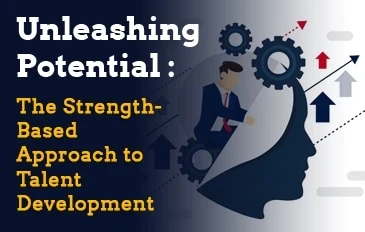Unleashing Potential: The Strength-Based Approach to Talent Development

Unleashing Potential: The Strength-Based Approach to Talent Development
In the world of talent development, a paradigm shift has occurred. Traditional approaches often focused on identifying and fixing weaknesses, but today, a strength-based approach is gaining momentum. This blog post aims to explore the power and benefits of adopting a strength-based approach to talent development. We will delve into the principles, strategies, and impacts of leveraging individual strengths to unlock untapped potential, enhance employee engagement, and drive organizational success.
- Understanding the Strength-Based Approach: The strength-based approach centers on identifying and cultivating individuals’ unique strengths and talents. Instead of solely focusing on weaknesses or skill gaps, this approach emphasizes harnessing and leveraging existing strengths to achieve excellence. It acknowledges that each individual possesses a set of natural talents and abilities that, when nurtured, can lead to exceptional performance and fulfillment.
- Identifying Individual Strengths: Discovering individual strengths is a critical first step in the strength-based approach. Various methods, such as assessments, interviews, and self-reflection exercises, can help individuals recognize their innate talents. Tools like the CliftonStrengths assessment or VIA Character Strengths survey provide valuable insights into one’s top strengths, enabling individuals and organizations to align roles and responsibilities with these inherent capabilities.
- Cultivating Strengths in the Workplace: Once strengths are identified, organizations can create an environment that fosters the development and application of these strengths. This can be achieved through targeted training programs, coaching, and mentoring initiatives. Opportunities for employees to apply their strengths in meaningful ways, such as assigning tasks that align with their strengths or creating cross-functional teams that leverage diverse strengths, can significantly enhance engagement and productivity.
- Benefits of a Strength-Based Approach: The strength-based approach brings numerous benefits to both individuals and organizations. For individuals, it boosts self-awareness, confidence, and motivation, allowing them to excel in their areas of strength. It promotes a positive mindset and a sense of fulfillment, leading to increased job satisfaction and overall well-being. Organizations benefit from higher employee engagement, increased productivity, and improved team dynamics. Leveraging strengths enhances collaboration, as individuals bring complementary skills to achieve collective goals.
- Leadership and the Strength-Based Approach: Leaders play a crucial role in implementing the strength-based approach. They can create a culture that values and recognizes individual strengths, inspiring others to do the same. Effective leaders invest time in understanding their team members’ strengths and aligning tasks and projects accordingly. They provide opportunities for growth and development that capitalize on strengths, fostering an environment of continuous improvement and innovation.
- Overcoming Challenges and Potential Pitfalls: While the strength-based approach is powerful, challenges may arise during implementation. It is important to avoid neglecting areas of improvement entirely, as a balanced approach is essential. Additionally, overcoming potential biases and stereotypes is crucial, ensuring equal opportunities for all employees to showcase their strengths. Regular feedback and coaching are necessary to provide support and help individuals maximize their strengths while addressing any performance gaps.
In conclusion, embracing a strength-based approach to talent development can unlock untapped potential, enhance engagement, and drive exceptional performance. By recognizing and cultivating individual strengths, organizations foster a culture of empowerment and fulfillment. Leaders who embrace this approach create environments where employees thrive, leading to higher productivity and innovation. As the strength-based approach continues to gain recognition, it is clear that focusing on strengths is a game-changer in talent development, enabling individuals and organizations to reach new heights of success.
Michael DeSafey is a leading executive recruiter for professionals in the construction, engineering, and environmental industries. He is currently the President of Webuild Staffing: www.webuildstaffing.com. To learn more about Michael, or to follow his blog, please visit www.michaeldesafey.com.
Category: Career Training, Construction, Employer Tips, Engineering, Environmental
